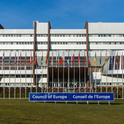The Royal Academy's once-in-a-lifetime exhibition of modern masterpieces from Russian museums has now opened—thanks, it would appear, to the quick decision taken by the British government to implement new legislation. The Russians feared the seizure of their art through British courts by unhappy creditors or by the heirs of collectors dispossessed in the Russian revolution. The British government's action seemed to concede that the Russians had a point. Most of the British media agreed. But was this really the case, or were the Russians using a largely imaginary threat to hold Britain over a barrel?
One clue can be found in the way the row began. The fears, it seems, did not originate with the Russian government but with the Guardian. On 24th October, the paper's legal columnist Marcel Berlins observed, with just a hint of schadenfreude, that, "It's excellent news that several Russian museums are allowing some of their most wonderful paintings to be exhibited at the Royal Academy of Arts next January. But… they cannot be certain—yet—that the paintings will not fall foul of English law, and… that they will be forced to leave some of the art behind, languishing in some vault while elaborate legal procedures take place to determine whether they can get them back." A day later the paper reported that "The director of Russia's Pushkin museum [in Moscow] said yesterday she would not lend any pictures to Britain for a forthcoming Royal Academy exhibition unless she received 'absolute guarantees' that they would not be the subject of legal action in the UK." The Russian culture minister himself told reporters that the Guardian story first alerted him to the danger.
Nevertheless, Russia's fears were grounded in experience. Various attempts have been made to impound Russian paintings before. André-Marc Delocque-Fourcard, the grandson of the Russian collector Sergei Shchukin (who by 1917 owned eight Cézannes, 16 Gauguins, 39 Matisses, 13 Monets, and 51 Picassos), spent 50 years attempting to re-acquire his grandfather's collection (which is now housed in the Pushkin Museum in Moscow), filing suits in Italy, France and America. In 2005, a Swiss canton impounded 54 priceless French paintings from the Pushkin Museum that were being transported back to Russia after a show in Martigny—the consequence of legal action by a Swiss businessman trying to collect a 14-year-old oil debt from the Russian government. (The paintings were soon returned.)

The British government, as it happens, did know about the problem. They had already passed legislation to deal with it. In a recent report entitled "Partial Regulatory Impact Assessment," civil servants advised that the old laws needed to be tightened up. "The Russians have become increasingly nervous about lending to the UK and other countries without protection from seizure legislation," the report said. "The State Immunity Act 1978 provides some protection for works of art lent to exhibitions in this country where such works are state-owned. However, this protection does not apply to property which is in use, or intended for use, for commercial purposes. The application of the act to works of art which are lent to this country for exhibitions is not entirely clear." And so a new law, the Tribunals, Courts and Enforcements Act, was passed; this was due to come into force in early February—within days of the Russian exhibition opening. In the end, James Purnell solved the problem by bringing forward the law's activation by a month. But that means that this was really a row about timing—a quibble over a few days. The idea that, in the brief window before the law came into effect, a hostile Swiss businessman, or a collector's heir, would have been able to persuade the slow-moving British legal system into dispatching policemen to seize works of art from a sell-out show belongs to the realm of comedy—one can imagine Peter Ustinov in the lead role.
Yet I doubt that the Russian hoo-hah was a mere opportunistic ploy. Their fears—though ridiculous—may well have been genuine. The nationalist paranoia that the Soviets displayed in the 1950s is increasingly being revived under Putin. On this occasion, it attached itself to art.
Now, though, the row is over. More than 100 of the greatest works of modernist art are on show at the RA. There one learns that Russian collectors were the first to latch on to Picasso, Matisse and Gauguin. One has a rare chance to see the extraordinary early work of the future Russian constructivists, such as Tatlin and Malevich. And one may be reminded of the anachronism of Russian history: how can a country of such cultural sophistication suffer from such political primitivism?











